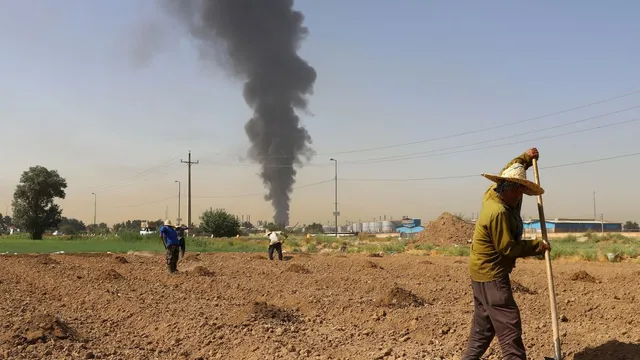- By Shivangi Sharma
- Thu, 31 Jul 2025 06:29 PM (IST)
- Source:JND
Iran’s capital, Tehran, is on the brink of a major water catastrophe, with experts warning that Day Zero, the moment when municipal taps run dry, could arrive as early as September. This looming crisis mirrors the alarming water emergency that gripped Cape Town, South Africa, in 2018, introducing “Day Zero” into the global vocabulary on water scarcity.
Just three years ago, Iranian officials dismissed comparisons to Cape Town. A water industry spokesperson said, “Tehran’s path is separate from Cape Town’s.” That confidence has now evaporated. With drought conditions persisting for five consecutive years, key reservoirs depleting rapidly, and rainfall down by 40 per cent over the past four months, Iran is facing its worst water crisis in recent history.
President Masoud Pezeshkian recently acknowledged the urgency of the situation. “If we do not make urgent decisions today, we will face a situation in the future that cannot be solved,” he warned during a cabinet meeting.
ALSO READ: Indian Man Receives 14-Year Sentence For Sexually Assaulting 11-Year-Old Girl In Singapore
Dams Are Drying Up
Tehran relies on three primary dams, Mamloo, Lar, and Karaj, for its water supply. The Energy Minister has issued a stark warning: unless residents drastically reduce their consumption, the Mamloo Dam will run dry in September, followed by Lar and Karaj soon after.
Though the Energy Ministry claims water service has not been officially suspended, many of the capital’s 10 million residents are already experiencing low water pressure or intermittent supply.
Experts blame the crisis not only on climate factors but also on decades of poor resource management and over-consumption. Iran has long faced shortages in electricity, gas, and water during periods of high demand. Now, the water crisis is hitting the capital directly, making it impossible to ignore.
Kaveh Madani, director of the UN University Institute for Water, Environment and Health, stressed, “In Tehran, if we cannot manage and people do not cooperate in controlling consumption, there won’t be any water left in the dams by September or October.”
Who Will Suffer Most?
As Day Zero nears, women are among the most vulnerable. Researcher Bagheri-Shad pointed out that women bear the brunt of water shortages at home, from storing water in barrels to managing household tasks, childcare, and hygiene.
Women face particular difficulties during menstruation, especially when public bathrooms are closed or lack running water, creating a major hygiene concern. Yet, their needs are often overlooked in emergency planning.

